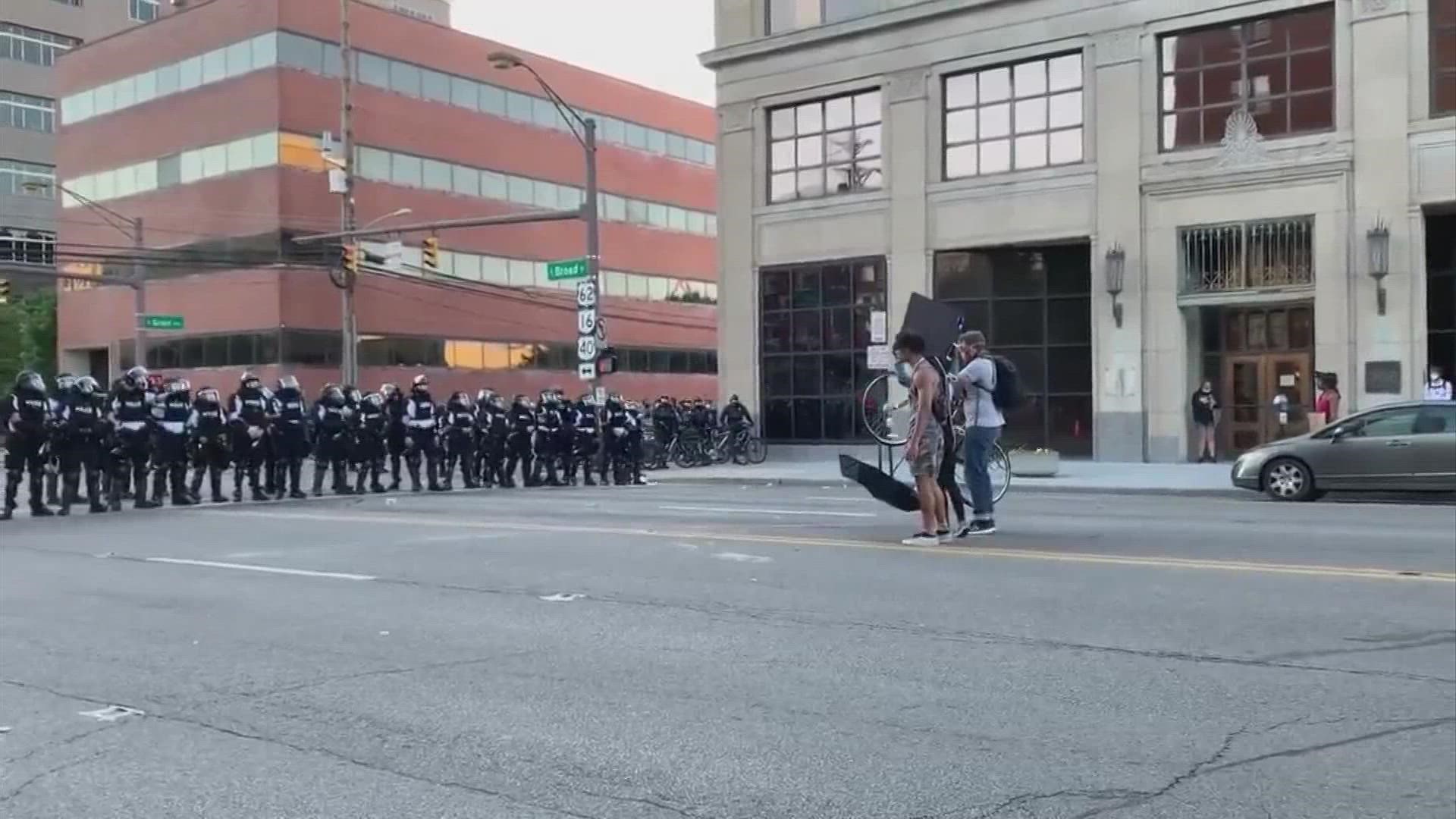COLUMBUS, Ohio — On the eve of the second anniversary of the civil justice protests, two separate federal lawsuits were filed Friday against the city and the Columbus Division of Police. The lawsuits allege that officers’ use of chemical agents and less than lethal force caused permanent injuries to some of the protesters and violated their civil rights.
This weekend marked the second anniversary of the civil justice protests that took place in Columbus and across the country in opposition to police brutality and the deaths of George Floyd and Breonna Taylor.
In one of the complaints filed in federal court Friday, attorneys representing 11 protesters allege members of the Columbus Division of Police used excessive force during the demonstrations and that the officers’ actions were “retaliating for speech they hated.” The lawsuit alleges the 11 protesters who are acting as plaintiffs in the case suffered either from psychological or physical injuries from the actions of the officers to quell the protests and clear the streets.
One of the protesters who was shot by a wooden bullet alleges their injuries were permanent and that they walk with a cane.
A separate lawsuit filed by another protester alleges his civil rights were violated as a result.
The city of Columbus had previously paid out $5.75 million to a group of protesters who filed a similar lawsuit against the city in the months after the protests had ended.
A federal judge also placed a permanent injunction - barring the use of chemical agents or less than lethal weapons from being used on non-violent protesters.
10TV received the following statement Tuesday from City Attorney Zach Klein:
“The City has yet to be served any additional complaints, so we’re unfamiliar with details of the allegations at this point. We will review these cases once we receive them.
“In the two years since the onset of the protests, my office has worked diligently with the leadership of the Division of Police to implement meaningful reforms that are transforming the culture of justice in Columbus, from policing to prosecution. Whether it’s reforming non-violent protest response protocols, making systemic changes, or improving community police relations, I remain committed to working toward a greater sense of justice, accountability and transparency for all who call Columbus home. Our work is not yet done, but in continued partnership with police leadership, I know we will always improve.”

